Abstract.
This paper is about the characteristics of inverter motor, the application and control principle of inverter motor, the design characteristics are highlighted, and also, the application of inverter motor with variable frequency drive and common motor are compared.
Keywords
AC speed control technology; inverter; stepless variable speed; insulation level; vector control; direct torque control, electric motor, VFD motor, manufacturer
Introduction
With the rapid development of power electronics and new semiconductor devices, AC speed control technology has been continuously improved and enhanced, and inverters are widely used in AC motors for their good output waveform and excellent performance-price ratio.
For example: steel mills for rolling large motors and medium and small roller motors, railroads and urban rail transit with traction motors, elevator motors, lifting motors for container lifting equipment, pumps and fans with motors, compressors, household appliances with motors, etc. have been using AC variable speed motors with variable frequency drives, and achieved good results.
The use of AC variable frequency speed motor than DC speed motor has significant advantages.
(1) simple and easy to adjust the speed, saving energy.
(2) AC induction motor structure is simple, small size, small inertia, low cost, easy maintenance, durable.
3)It can expand the capacity, realize high speed and high voltage operation.
4)It can realize soft start and fast braking.
5) Non-sparking, explosion-proof, and strong environmental adaptability.
In recent years, the frequency conversion speed control transmission device to 13% to 16% annual growth rate, and has gradually replaced most of the trend of DC speed control transmission device.
As the ordinary asynchronous motor working with constant frequency and voltage power supply has great limitations when applied to the variable frequency speed control system, for this reason, the special variable frequency AC electric motor designed according to the use of the occasion and use requirements has been developed.
There are mainly inverter motors for low noise and low vibration, inverter motors with improved low-speed torque characteristics, high-speed inverter motors, motors with speed measurement generators and vector-controlled inverter motors.
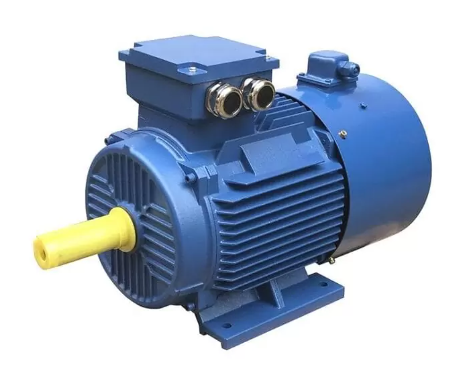
The main features and control principle of frequency conversion motor
Frequency conversion special motor has the following characteristics.
(1) B-level temperature rise design, F-level insulation manufacturing.
Adopting polymer insulation material and vacuum pressure dipping paint manufacturing process and special insulation structure, the electrical winding insulation voltage resistance and mechanical strength are greatly improved, which is capable of high speed operation of the motor and resisting the high frequency current impact of the inverter and voltage damage to the insulation.
(2) high balance quality, vibration level R (vibration reduction level) mechanical parts processing precision
The use of special high-precision bearings, can be high-speed operation in motor's speed.
(3) forced ventilation and heat dissipation system, all using imported axial fans ultra-quiet, high life, strong wind.
To protect the motor in any speed, get effective heat dissipation, can achieve high-speed or low-speed long-term operation.
4)Compared with the traditional frequency conversion motor,
with a wider range of speed regulation and higher design quality, by the special magnetic field design, to further suppress the high harmonic magnetic field, in order to meet the design index of wide frequency, energy saving and low noise.
5)With a wide range of constant torque and power speed regulation characteristics, smooth speed regulation, no torque pulsation.
With all kinds of frequency converters have good parameter matching, with vector control, can realize zero speed full torque, low frequency high torque and high precision speed control, position control and fast dynamic response control.
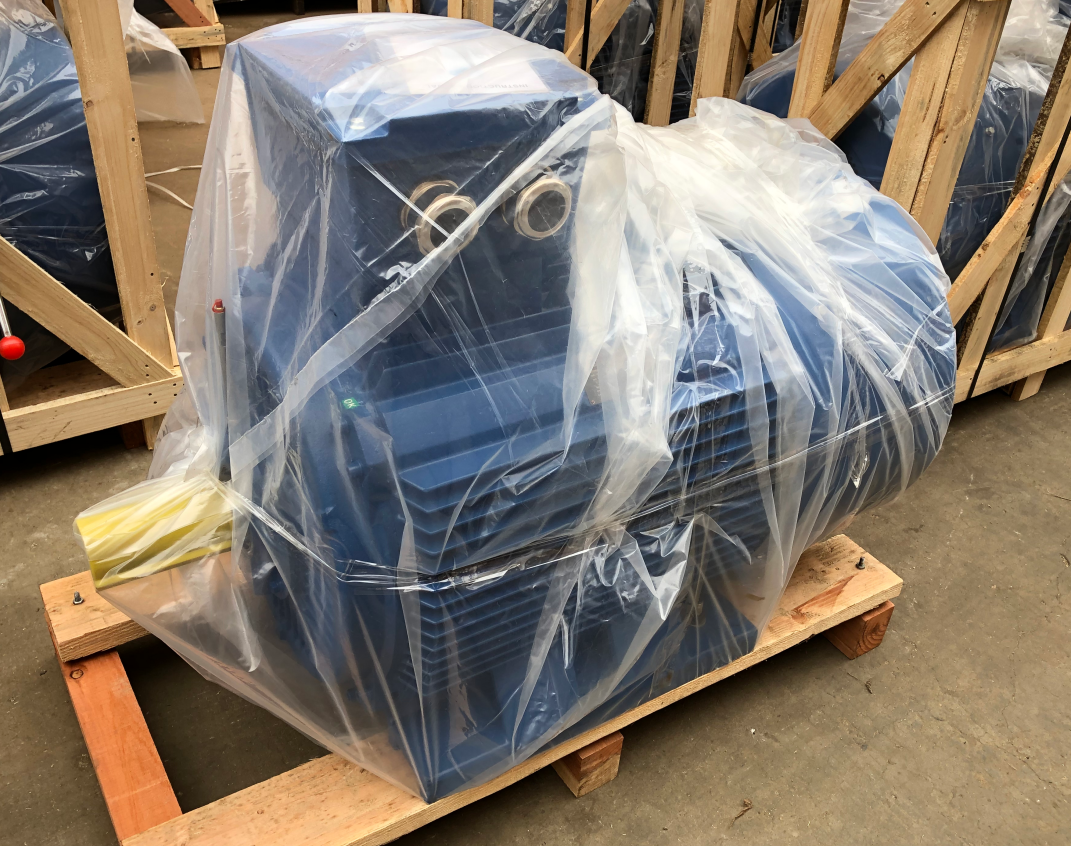
(6) Frequency conversion special motor can be equipped with brakes and encoders,
so as to obtain accurate parking and realize high-precision speed control through closed-loop speed control.
Adopting "reducer + inverter special motor + encoder + inverter" to realize precise control of ultra-low speed step less speed regulation.
(7) The inverter motor has good versatility,
its installation size conforms to IEC standard and is interchangeable with general standard motors.
The speed of the asynchronous motor is proportional to the frequency when the rate of rotation does not change much, so changing the frequency of the power supply can change the speed of the asynchronous motor.
In frequency regulation, the main flux is expected to remain constant.
If the main flux is larger than the flux in normal operation, the magnetic circuit will be oversaturated and the excitation current will increase, and the power factor will be reduced.
If the main flux is smaller than the flux in normal operation, the motor torque will be reduced.
In the early 21st century, the inverter used mainly adopts the AC-DC mode (VVVF frequency conversion or vector control frequency conversion), which first converts the AC power supply to DC power through the rectifier, and then converts the DC power to frequency and voltage.
The DC power supply is converted to DC power by rectifier, and then to AC power with controlled frequency and voltage to supply the three phase motor.
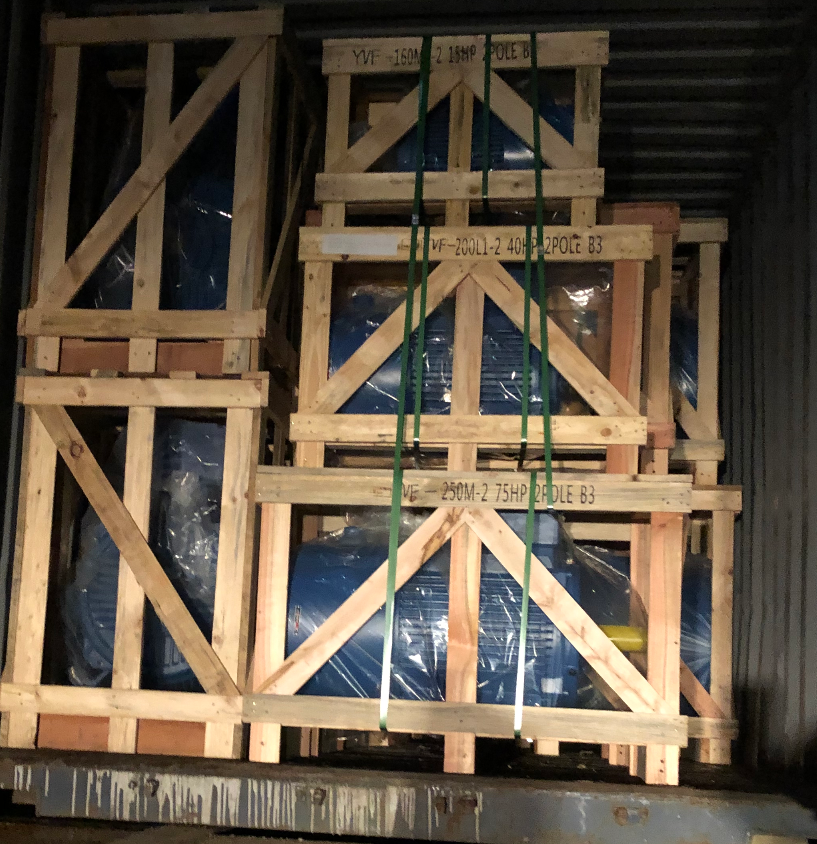
The circuit of inverter generally consists of four parts: rectifier, intermediate DC link, inverter and control.
The rectifier is a three-phase bridge type uncontrolled rectifier, the inverter is an IGBT three-phase bridge type inverter with PWM waveform output, and the intermediate DC link is for filtering, DC energy storage and buffering reactive power.
VFD motor - Frequency conversion motor application
Frequency conversion motor has become the mainstream speed control program, can be widely used in all walks of life stepless variable speed transmission.
Especially with the increasingly widespread application of inverter in the field of industrial control, the use of inverter motor is increasingly expanding, due to the superiority of inverter motor in frequency control compared to ordinary motor, where the inverter is used there are inverter motor.
The social benefits of nationalized high-voltage inverter devices are significant, mainly energy saving, resource saving and environmental pollution reduction.
Eliminate the start-up shock of the AC motor and the impact on the power grid, and reduce the failure rate of the electric motor and equipment.
Improve the control precision and automation degree.
The economic benefits of frequency conversion speed control are remarkable.
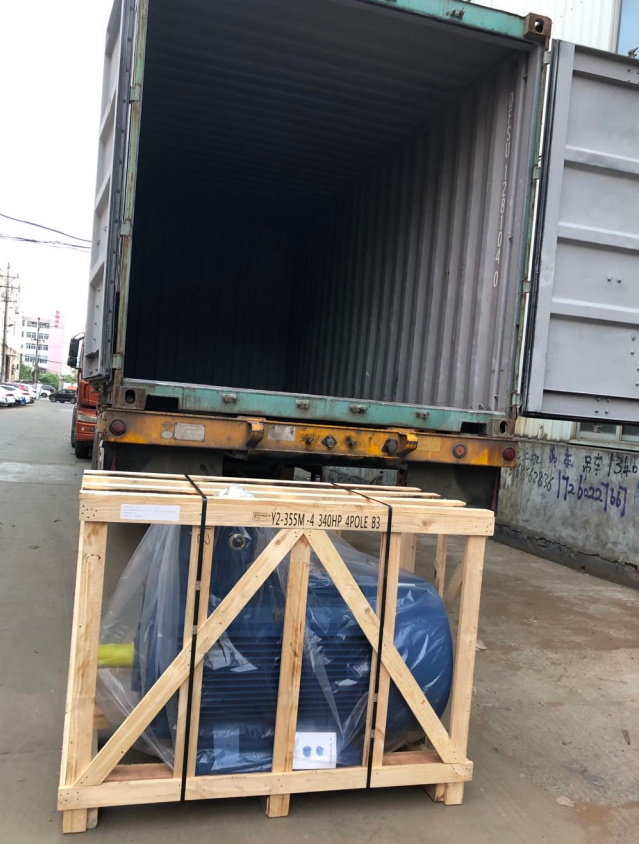
For centrifugal pumps and fans, fluid flow is proportional to the primary side of the speed, torque is proportional to the secondary side of the speed, and power is proportional to the tertiary side of the speed, the speed decreases, and motor power consumption decreases in three directions, so the power saving effect of frequency conversion speed control is very significant.
If the flow rate decreases, the rotational speed decreases, the current decreases, and the power consumption of the motor decreases, theoretically saving energy.
If the original use of dampers, valve regulation, the flow rate decreases, the pressure head increases, the motor power decreases, so that the variable frequency speed regulation than the dampers, valve type regulation energy saving.
In addition to energy saving and efficiency, for different loads, there are some indirect economic benefits, mainly power factor can be improved, to achieve soft start, reduce the starting torque on the electrical and mechanical damage to the motor, smooth, stable and high precision control.
21st century, variable frequency speed control has become the mainstream speed control program, can be widely used in all walks of life stepless variable speed transmission.
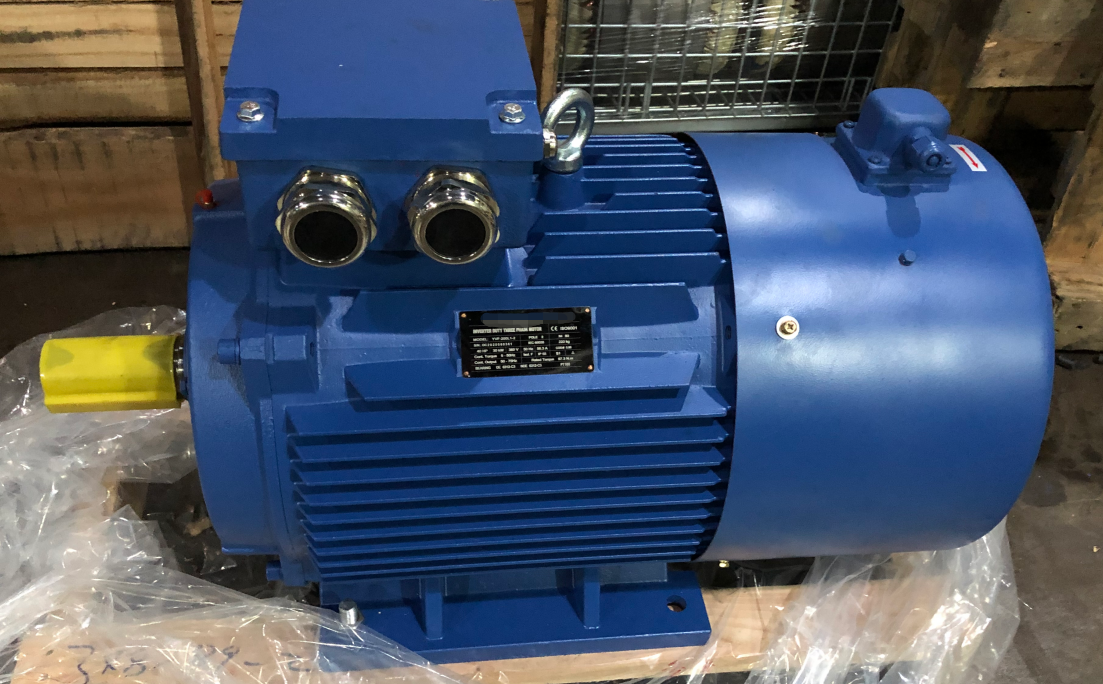
Design features of variable frequency motors
3.1 Electromagnetic design
The main performance parameters considered in the design of ordinary asynchronous motors are overload capacity, starting performance, efficiency and power factor.
As for the inverter motor, since the critical turndown rate is inversely proportional to the power supply frequency.
It can be started directly when the critical turndown rate is close to 1.
Therefore, the overload capacity and starting performance no longer need much consideration, and the key issue to be solved is how to improve the motor's adaptability to the non-sinusoidal power supply.
The electromagnetic design focuses on the following aspects:
1) Reduce the stator and rotor resistance as much as possible, reducing the stator resistance can reduce the fundamental copper consumption to compensate for the increase in copper consumption caused by high harmonics.
2) To suppress the high harmonics in the current, the AC motor inductance needs to be increased appropriately.
But the rotor slot leakage resistance is larger, and its skin effect is also larger, and the copper consumption of high harmonics is also increased.
Therefore, the size of motor leakage reactance should take into account the reasonableness of impedance matching in the whole speed range.
3) The main magnetic circuit of inverter motor is generally designed to be unsaturated, one is to consider that high harmonics will deepen the magnetic circuit saturation, and the other is to consider that at low frequency, the output voltage of inverter should be increased appropriately in order to improve the output torque.
3.2 Structure design
Structure design, mainly also consider the impact of non-sinusoidal power characteristics on the insulation structure of the inverter motor, vibration, noise cooling mode, etc., generally pay attention to the following issues.
(1) insulation level, generally F level or higher, to strengthen the insulation to ground and line turn insulation strength, especially to consider the ability of insulation to withstand shock voltage.
(2) The vibration and noise of the motor, we should fully consider the rigidity of the motor components and the whole, and try our best to improve its inherent frequency to avoid the resonance phenomenon with each force wave.
(3) Cooling method: generally use forced ventilation cooling, that is, the main motor cooling fan is driven by an independent motor.
(4) Measures to prevent shaft current, bearing insulation measures should be adopted for motors with capacity over 160KW.
Mainly, it is easy to produce magnetic circuit asymmetry, which will also produce shaft current.
When the currents produced by other high frequency components are combined together, the shaft current will be greatly increased, which will lead to bearing damage, so insulation measures should be taken in general.
5)For constant power variable frequency motor, when the speed exceeds 3000/min, special grease with high temperature resistance should be used to compensate for the temperature rise of the bearing.
The difference between inverter motor and ordinary motor
Most of the domestic ordinary motors can only run under the condition of AC380V/50HZ, ordinary motors can reduce or increase the frequency of use.
But the range can not be too large, otherwise the motor will heat up or even burn. Inverter motors can be used at any speed within its speed range, and the motor will not be damaged.
In general, frequency conversion induction motor with 100% rated load in the range of 10% to 100% rated speed continuous operation, the temperature rise will not exceed the motor's standard allowable value.
Most of the heat dissipation of ordinary motors is air self-cooling type, and the motor heat dissipation depends on the churning of the two impellers at the end of the motor.
When the speed of the motor is low, the heat dissipation of the motor becomes a problem.
Compared with ordinary motors, the price of inverter motors is not much more expensive, and the advantages are obvious.
Inverter motor adopts "special inverter induction motor + inverter" AC speed control method, so that the degree of mechanical automation and production efficiency is greatly improved, equipment miniaturization, increase comfort.
Over 3000r/min, special grease with high temperature resistance should be used to compensate for the temperature rise of the bearings.
Secondary torque load, when the speed is reduced, the torque is also reduced, and heat generation is also reduced, suitable for the selection of ordinary motor for frequency conversion, in the actual speed is not less than 40% of synchronous speed to use.
Other loads, when running at 60% synchronous speed and above, use ordinary motors.
When running at 25%-60% synchronous speed, use external forced cooling inverter cage type three-phase asynchronous motor, i.e. special motor for frequency conversion.
When the speed is below 25% synchronous speed, use completely forced cooling motor. That is, vector special motor.
The speed controlled by different frequency conversion control methods is different.
The range of speed controlled by U/F control method is 150-1470m/min; the range of speed controlled by vector control without speed sensor and direct torque control is 60-1500m/min; the range of speed controlled by vector control with speed sensor and direct torque control, the range of control speed is 5-1500m/min, and the stability of operation at 5m/min is not very good.
After adopting frequency converter, the motor can be started at very low frequency and voltage without inrush current, and can use various braking methods supplied by the frequency converter for fast braking,
which creates conditions for frequent starting and braking, thus the mechanical system and electromagnetic system of the motor are under the action of cyclic alternating force,
which brings fatigue and accelerated aging problems to the mechanical structure and insulation structure.
The FM technology requires three main aspects of the motor: insulation level, forced cooling and rotor bearings.
If the speed is regulated upwards beyond the fundamental frequency, the mechanical strength of the motor structure is also considered.
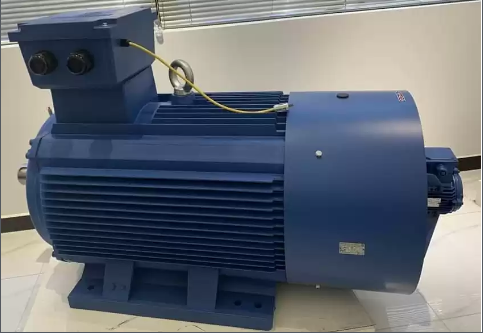
Conclusion
The efficiency and temperature rise of the motor will be about 10% higher in inverter drive, and the temperature rise will be about 20% smaller, especially in the low frequency region of vector control or direct torque control.
The inverter motor is better than the ordinary motor for the occasions that need frequent starting, speed regulation and braking.
In terms of electromagnetic noise and vibration, inverter motors have lower noise and less electromagnetic vibration than ordinary motors when driven by inverter.
Since the inverter motor is designed for inverter drive, it can withstand larger voltage changes and the insulation strength of the inverter motor is higher.
Especially in DTC control mode, it is a great test for the insulation strength of the motor.
The main difference, the inverter motor has extra heat dissipation (forced ventilation with separate axial fans).
The heat dissipation in low frequency, DC braking and some special applications is much better than normal AC asynchronous motors.
Find the details of VFD Frequency variable motor from professional manufacturer

If you would like to make a professional order, please kindly send us an inquiry.

Dongchun motor has a wide range of electric motors that are used in various industries such as transportation, infrastructure, and construction.
Get a prompt reply.








